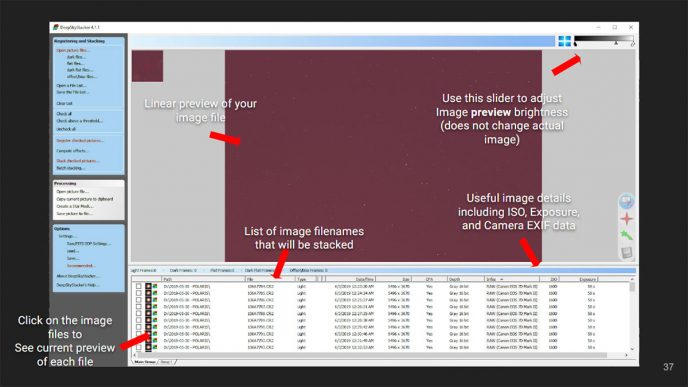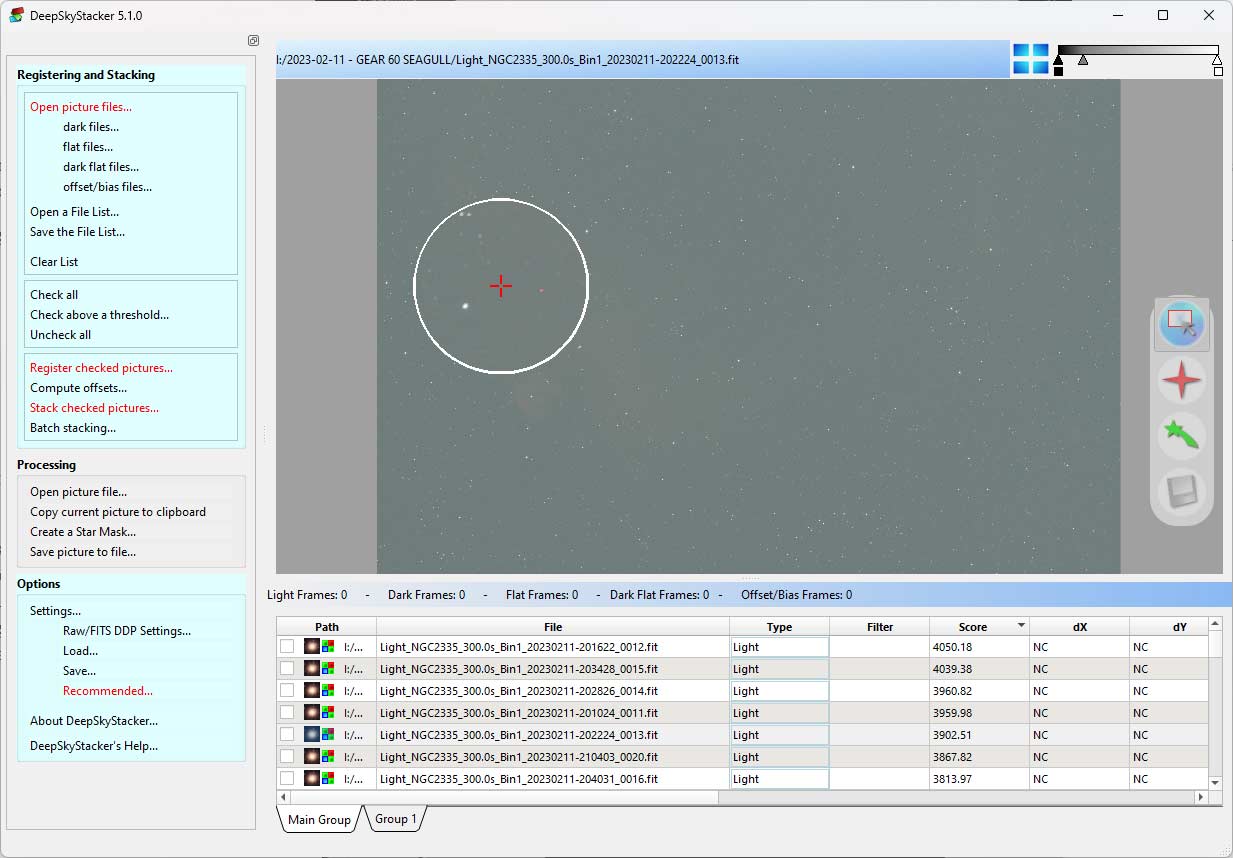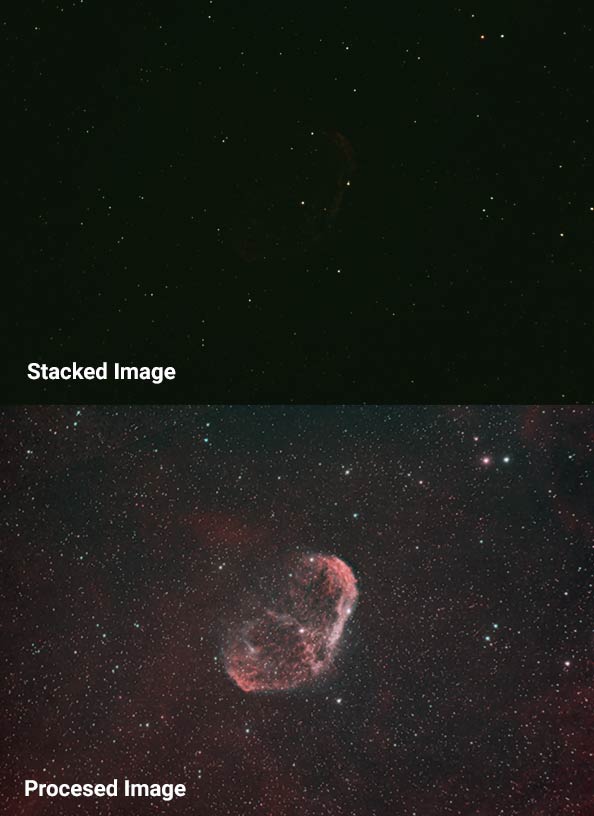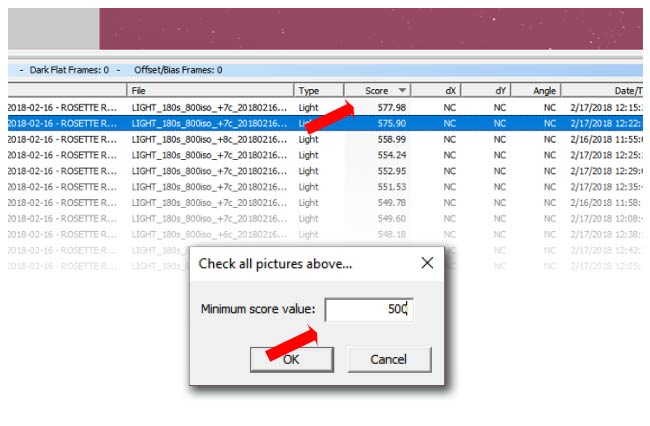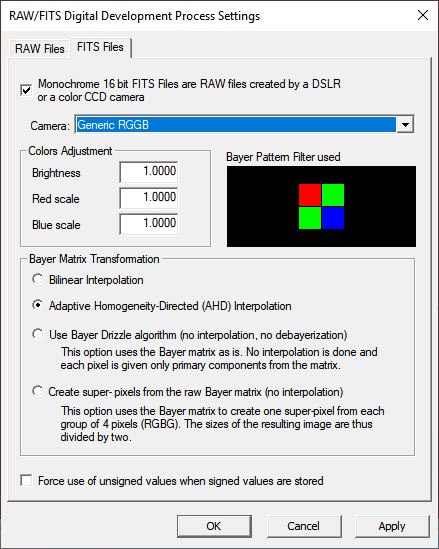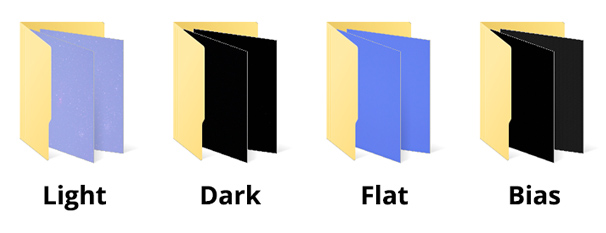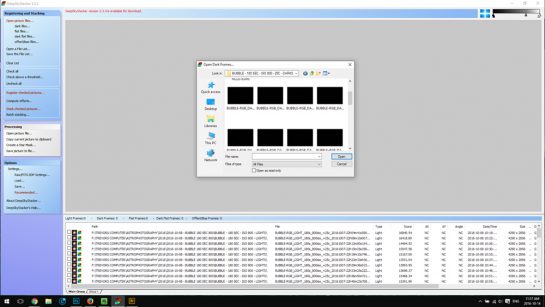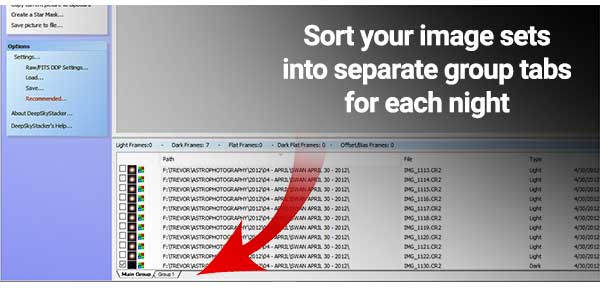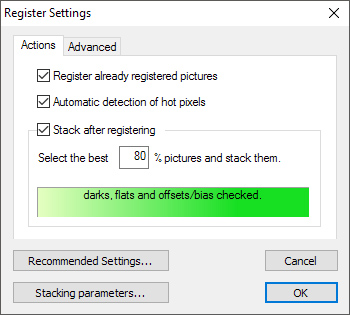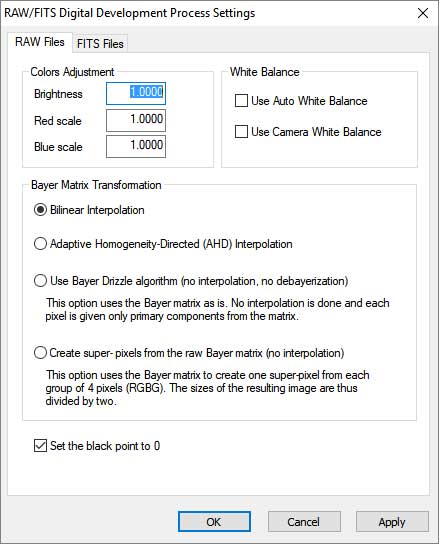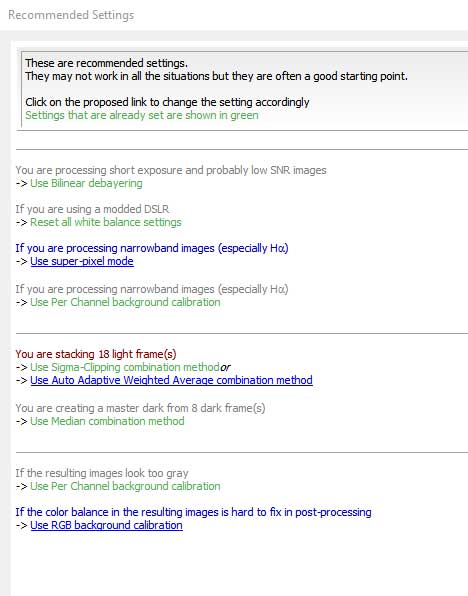Deep Sky Stacker Tutorial
I have been using DeepSkyStacker to get the most out of my astrophotography images since I began shooting through a telescope in 2011. This useful and easy-to-use freeware tool simplifies the pre-processing steps of creating a beautiful deep sky image.
The concept of image stacking in astrophotography is simple, by combining multiple images together, the signal-to-noise ratio can improve. Feel free to follow along with my latest DeepSkyStacker tutorial video:
With so much time and effort going into the acquisition stages of astrophotography, it would be a shame not to achieve the best possible results when stacking your images. In this post, I will explain the DeepSkyStacker settings I use to stack and register all of my astrophotography images.
If you haven’t already done so, download DeepSkyStacker for free. The version I currently use to stack and register my astrophotography images is DeepSkyStacker 5.1.0.
The latest version of DeepSkyStacker (available June 2024) includes a number of great new features including being able to ‘blink’ your image frames thanks to a stacking panel display that caches the last twenty images displayed.
I have used DeepSkyStacker to align, calibrate, and integrate every deep-sky astrophotography image I have ever taken. Learning how to use this free software successfully is well worth your time, as you will enjoy it for years to come.
Deep Sky Stacker
Over the past 13 years, I’ve stacked images created using a DSLR camera, dedicated astronomy camera, and CCD Camera. Whether you are stacking .RAW image files from my Canon DSLR, or .FIT files from a CCD camera (or dedicated CMOS), the right settings can be the difference between a good image, and a great one.
Integration is the key to great astrophotography image. This is the reason why amateur astrophotographers spend multiple nights collecting pictures on a single deep sky target. Calibration is another vitally important component of the process, as this removes unwanted elements from your image that would otherwise spoil the picture.
For an in-depth, step-by-step guide to DeepSkyStacker and Adobe Photoshop, please consider downloading my premium image processing guide.
Page 35 of my premium image processing guide.
Main Features
For many amateur astrophotographers, DeepSkyStacker (DSS) is an integral part of their image-processing workflow. For myself, I find that DeepSkyStacker does an exceptional job of registering astrophotography images taken using a variety of methods. This includes everything from untracked DSLR and camera lens shots to deep sky astrophotography through a telescope.
DSS can register images of everything from a wide-angle Milky Way panorama to a deep sky emission nebula. Most of my experience with this software has been on a Windows 10 PC, stacking Canon RAW files from a DSLR. To run Deep Sky Stacker on a Mac computer, a workaround such as using a virtual machine is necessary.
The latest version of DeepSkyStacker is 5.1.0 (March 2023). It is the most advanced version yet.
Let’s take a look at the main features of this software:
- Registration of picture sets
- Creation and use of offsets, flats, and dark frames
- Native use of RAW files from most DSLR
- Multiple Stacking methods including average, median, kappa-sigma clipping, and more
- Preview of all pictures including RAW and FIT file types
- Simple and intuitive user interface
The DeepSkyStacker User Interface. Page 44 of my premium astrophotography image processing guide.
DSS offers some advanced features I have not yet put into practice myself, such as comet stacking. The steps outlined on this page are most useful for beginners using a DSLR camera to capture their images. The official website offers some great resources for understanding how the process works.
If you want to review the statistics of your images and stack them as they are captured, you can try using DeepSkyStacker Live.
It’s important to remember that DeepSkyStacker was meant to integrate and calibrate your data into a useful intermediate file. It does not include the robust image processing tools of an application like Adobe Photoshop.
All of the images that run through the pre-processing stages in DSS are then brought into Adobe Photoshop for final image processing. The image below shows a stacked image before and after processing in Photoshop.
See the difference post-processing makes?
When you have successfully created your intermediate file in DeepSkyStacker, you can process it much further. Read my Photoshop image processing tutorial for a basic walkthrough of the process. Or, download my premium processing guide for an in-depth look at all of the techniques I use to process astrophotography images.
Tutorial (Deep Sky Images)
There are several applications available to register, calibrate, and stack astrophotography images including Astro Pixel Processor, and PixInsight. However, DeepSkyStacker is completely free and continues to receive new updates from the developer (version 4.2.2 was published in August 2019).
The software may seem confusing at first, but the good news, generally the default settings work best.
I regularly capture images on the same deep-sky object over multiple nights to increase the signal-to-noise ratio. I shoot through heavy light pollution in my backyard, which means I need to capture up to 4x or more the amount of exposure time someone living under dark skies would (see this article for a better understanding of this calculation).
I have experimented with many different combinations of options for stacking DSLR raw files, and have found that most of the default settings work best. DSS includes a handy “recommended settings” tab, that will highlight helpful settings to use based on your image data.
Related Post: Astrophotography Image Stacking Software Choices
File Preparation Before Stacking
If you follow my astrophotography tutorials, you will have captured light frames, dark frames, flat frames and offset/bias frames during each of your imaging sessions. These support files (calibration frames) will go a long way towards improving your final image. I recommend capturing new calibration files for each night of imaging unless you are certain that your master files match your light frames.
Only stack your best images
Before opening the files in Deep Sky Stacker, I pre-qualify the images I want to stack. I use a RAW image preview application called Adobe Bridge to review and organize my images. Any photos with football-shaped stars from hiccups in autoguiding are tossed in the recycling bin. The same goes for frames with airplanes, satellites or passing clouds.
You can also use the scoring feature built into DeepSkyStacker for a calculated interpretation of your image data.
Using the Score Feature
After registering your pictures in DeepSkyStacker, it will provide a score for each of your light frames. The values of the score will vary widely depending on the imaging equipment used. There is no benchmark number to achieve.
This is handy when stacking your final picture, as you may want to only include the light frames with the highest score in your final stack. Instead of clicking Check all as you did when registering the files, click Check above a threshold.
If you have prescreened your images already, you will likely stack most of the images you registered anyway!
Remember, the scores will only appear after you register the picture files. Once you have selected a minimum score value, DeepSkyStacker will only stack your best light frames into the final image. I recommend choosing a minimum score value that will use at least 70-80% of your light frames, as you want to use as much integration time as possible for the best signal-to-noise ratio.
Stacking FIT files (CCD or Dedicated CMOS)
If you are transitioning from a DSLR camera to a dedicated astronomy camera, one of the first hurdles to overcome is the new file type the camera produces. It’s called “FITS”. Stacking FIT files in DeepSkyStacker presented a bigger learning curve than I anticipated.
I’ve had most of my success using trial and error. For example, I was able to produce an image with the correct color balance using a dedicated astronomy camera with an RGGB Bayer pattern. I discovered this during my Markarian’s Chain imaging session, by using a specific color adjustment setting.
You can adjust the RAW/FITS Digital Development Process Settings to make sure that you have the correct Bayer Pattern Filter for your specific camera selected. For most color dedicated astronomy cameras (including the ZWO ASI294MC Pro camera I use), the correct setting is Generic RGGB.
These files can be hard to preview, due to the fact that they need to be debayered first. For this file type, I inspect and remove poor-quality frames within DeepSkyStacker itself. This method can be a bit tedious, but a necessary step to ensure your final image only includes the best data.
Stacking FITS frames in DeepSkyStacker (Video)
Keep Your Image Sets Organized
Organize your images into 4 folders. Lights, Darks, Flats, and Offset/Bias.
In the Main Group:
Open Picture Files
Select all of your light frames from your first night of imaging. Since you have already reviewed and approved all of the images in this folder, this is simply a matter of selecting every RAW file in your light frame folder.
Dark Files
Select the dark frames you captured from the same imaging session. The images need to be the same exposure length, ISO and temperature as your light frames. These can be easily captured with the lens cap on your camera. I recommend using a minimum of 15 dark files or more.
I believe that dark calibration frames are a must for DSLR astrophotography. In my experience, they reduce a significant amount of noise in the final image through dark frame subtraction.
Flat frames
Flat frames require a little more effort than dark frames but can be collected in a very short amount of time. Stretch a white t-shirt over the objective of your telescope, and smooth out all of the folds.
Point your telescope towards the blue dawn sky (or an evenly-lit artificial light source), and capture a number of shots with your DSLR set to AV mode. 15 flat files can make a significant improvement to your final image. They remove artifacts such as dust and correct vignetting and gradients in your image.
Offset/bias
Offset/bias files are quick and simple to capture with your DSLR camera. Just take about 15 exposures with the lens cap on your DLSR. These exposures need to be the fastest possible shutter speed using the same ISO as your light frames. (On the Canon 450D, that’s a 1/4000 second exposure)
Why these support files are important
How to Combine Images from Multiple Nights
Use the tabs to group your image sets
Once you’ve got your picture files (lights) and all of your support files loaded into the main group, it’s time to load up your files from night 2. Click on the small Group 1 tab at the bottom left of the screen, and repeat the process for opening files from imaging night 2.
Remember, you can stack different variations of exposures together in Deep Sky Stacker. This means a range of ISO sensitivity and exposure length.
Some imaging sessions may include all 3 supports files to complement the light frames, some may not. This is fine. After all of the image files have been loaded into their respective categories, it is time to register and stack the frames into a single file. Finally, make sure to click “‘check all“, to make sure that all of the frames you have loaded are selected.
Before we click Register and Stack images, let’s take a look at the current default settings.
Accessing the Register and Stacking settings is accessible by clicking “Settings…” under the options tab.
The default settings for registering is set to a 10% star detection threshold. In my experience, the default value of 10% has worked very well for stacking images captured using my 12MP Canon EOS Rebel DSLR. If you decrease the star detection threshold, DSS will detect fainter stars. The number of stars in a given light frame is displayed in the lower half of the screen.
With a light frame selected, look for the #Stars category.
The following checkboxes should be checked before moving hitting “OK”, and letting DSS begin its process.
- Register already registered pictures
- Automatic detection of hot pixels
- Stack after registering
The DeepSkyStacker website states that the automatic detection of hot pixels only works if using Super-pixel, Bayer Drizzle, bilinear and AHD interpolation modes. However, I leave this box checked regardless and hot-pixels and stacking errors have never been an issue.
Stacking Parameters
Unless you are experiencing errors in the stacking process, leave all of the values in the stacking parameter dialogue box unchanged. Yes, this sounds like a conveniently simple option, but default values are usually set for a reason.
If you want, go ahead and click on the different modes in the “Result” tab. The program will show you a preview of the final composure created using Mosiac and Intersection modes. I prefer to use Adobe Photoshop for the final framing and cropping of the image.
As for the stacking parameters of the light and dark frames, Kappa-Sigma clipping and Median work well in the Light, Dark, Flat, and Bias/Offset categories. I do not use any additional features such as the detection and cleaning of hot pixels in the Cosmetic tab.
The Kappa-Sigma clipping method is best if you want to remove satellite trails from the image (which is an increasingly common issue). This rejection algorithm doesn’t reject the entire sub-exposure, just the outlying pixels with the satellite trails running through them. It replaces the pixels with an average value based on the rest of the frames.
Use the Kappa-Sigma Clipping Combination Method to remove satellite and airplane trails from your final image.
One setting I do change, however, is the output location folder of the Autosave.tif file. I prefer that these images populate in a specific folder of my choice rather than mixed in with a folder of light frames.
Depending on the quality of and amount of light frames available, I usually select the best 80-90% of pictures and stack them.
Ready to Stack?
You’ve got all of your lights, darks, flats, and offset/bias frames loaded. The default settings are currently selected, and the ever-comforting green bar is displayed (confirming your use of all support files) But wait, if only there was a way to confirm all of the files are as they should be.
The Stacking Steps Window
Before you run DSS, be sure to check and see if there are any warnings in the dialogue window. In the case above, there was a single Flat frame with a miss-matched ISO speed. These warnings are useful for catching little mistakes in your file organization that can potentially make a big impact on your image.
At this point, you can remove or add any frames based on the information that DSS has provided.
If all looks well, and there are no more warning messages in the Stacking Steps window, you can proceed to run the register and stacking process. I enjoy the information preview about the estimated total exposure time.
Deep Sky Stacker Tutorial (Video)
In the video tutorial below, I walk through some of the basic settings used in DeepSkyStacker. I then bring the image into Adobe Photoshop for further image processing.
If you plan on processing your image in Adobe Photoshop, I recommend leaving these settings as they are.
Balancing levels, curve adjustments, and boosting saturation are all staples of an Astrophotography processing workflow in Adobe Photoshop. Photoshop offers many more options and a higher level of control than Deep Sky Stacker for such edits.
What about the Recommended Settings option?
DeepSkyStacker has a “Recommended Settings” option that offers suggestions based on the image files submitted. Some of the recommendations include changing the stacking mode used such as “Use Median Combination Method”.
I have tested both the recommended settings and the default settings and found the default to produce better results.
If you are determined to see the subtle differences in the final stacked image, you can go through the entire process using the default Deep Sky Stacker settings vs. the recommended settings. I found that the recommended settings had varying results, with fuzzier more washed-out stars than the original stack.
I prefer to try both stacking methods and compare the results on a per-image basis. You may find that the stacking modes suggested by DSS improve your image.
Below: The Andromeda Galaxy stacked in DeepSkyStacker. Final processing in Adobe Photoshop.
To view the techniques I use in Adobe Photoshop to finish the image, watch my image processing tutorial video featuring the Soul Nebula. There is a link in the description to download the RAW data and process the image yourself.
Stacking wide-angle Camera Lens Images
Although I mostly use DSS for deep sky images, it is also very useful to stack wide-angle astrophotos through a camera lens as well. The same signal-to-noise benefits can be achieved by stacking multiple images together.
You may experience a number of issues when attempting to register and stack images that include terrestrial elements such as trees or any other terrestrial landscape. If you are using a star tracker to compensate for the apparent rotation of the night sky, the ground will blur. If you are using a stationary tripod (non-tracking), it’s the sky that is moving between each frame.
The photo below was captured using an iOptron SkyGuider Pro to track the night sky, with a DSLR camera and wide-angle lens mounted on top. As you can see, the rooftop of my neighbor’s house is blurred, because DSS registered the images with the moving sky.
An excessive amount of movement between the night sky and the foreground (over time) can make stacking images like this difficult. One solution is to photograph the night sky and foreground separately and combine the images together in Photoshop later.
Recommended Settings and Tips
For my wide-angle shots, I use a modified Canon DSLR with a light pollution filter. The settings I recommend below will work well for a modified DSLR shooting through moderate to heavy pollution. Those shooting with a stock DSLR may have to experiment with these settings to produce a pleasing result.
White Balance Settings
If you are using a modded DSLR, make sure to leave the white balance checkboxes unchecked. Using an auto white balance or the “camera white balance” with a modified camera will produce odd results. I would also suggest checking off the “set the black point to 0″ option.
This should provide you with a final image with a background sky that is much easier to correct in post-processing. Gradient Xterminator does a great job of correcting gradients in wide-angle shots of the night sky.
Recommended Settings
As for DeepSkyStacker’s recommended settings, the graphic below shows you which ones I like to use on a wide-angle starry sky photo. One of the important settings is to use Per Channel background calibration – as the RGB background calibration does a poor job of producing correct colors in my experience.
Scenarios and recommended settings:
- Scenario: You are processing long exposure and possibly good SNR images
- Recommendation: Use AHD debayering
- Scenario: If you are using a modded DSLR
- Recommendation: Reset all white-balance settings
- Scenario: If you are processing narrowband images (especially Ha)
- Recommendation: Use super-pixel mode
- Scenario: You are stacking (x amount) of light frames
- Recommendation: Use Sigma-Clipping combination method
- Scenario: You are creating a master dark from 31 dark frame(s)
- Recommendation: Use Sigma-Clipping combination method
- Scenario: If the resulting images look too gray
- Recommendation: Use Per Channel Median combination method
- Scenario: If the color balance in the resulting images is hard to fix in post-processing
- Recommendation: Use RGB background calibration
What to do if DeepSkyStacker Crashes
I have experienced this issue many times while attempting to register and stack both RAW image files from a DSLR and .FIT from a CCD camera. It can be a frustrating experience, especially if you have left your computer to let DSS do its thing. You come back 20 minutes later to view your stacked image, and instead, find an error message saying “This program has stopped working” or any number of other error messages.
I have found that the following steps can decrease your chances of producing an error using DSS:
1. Don’t run other applications while stacking
I am a multitasker. Usually, I have 5-6 windows open at a time from my Google Chrome browser to Adobe Photoshop. This all uses RAM on your machine, which DSS uses to process your image. Give DeepSkyStacker your full RAW capacity to use during its process.
2. Pay attention to the options you’ve selected
Certain options, such as “superpixel mode” are very demanding on your system and have been known to crash. Take a screenshot of your settings used before stacking, so you can compare results and try another stacking parameter next time.
3. Try stacking fewer images
The more frames you stack, the more time and resources DSS will pull from your machine. Try being more selective with the images you plan to register, and only include the absolute best images.
4. Try an external hard drive
You can tell DSS to utilize the space available on an external hard drive to render your images. The temporary files can require up to 100GB of space or more depending on the number of images in the set. This destination is selected under Settings > Stacking Settings > Temporary Files Folder.
I hope you were able to learn something new about DeepSkyStacker following my tutorial. It’s one of the few applications that hasn’t changed very much since I began using it in 2011, and it continues to deliver consistent results.
Alternatives to DeepSkyStacker
Everyone prefers to process and stack their astrophotography images in their own way. DeepSkyStacker isn’t the only software available to calibrate and stack your image frames. Here is a list of alternatives to DeepSkyStacker:
Related Software:
- Astro Photography Tool for camera control
- Registax – Preferred Planetary Astrophotography Software
- Resources for Astrophotography (Software and Tools)
Related Posts:
Download my RAW stacked image produced by DeepSkyStacker

